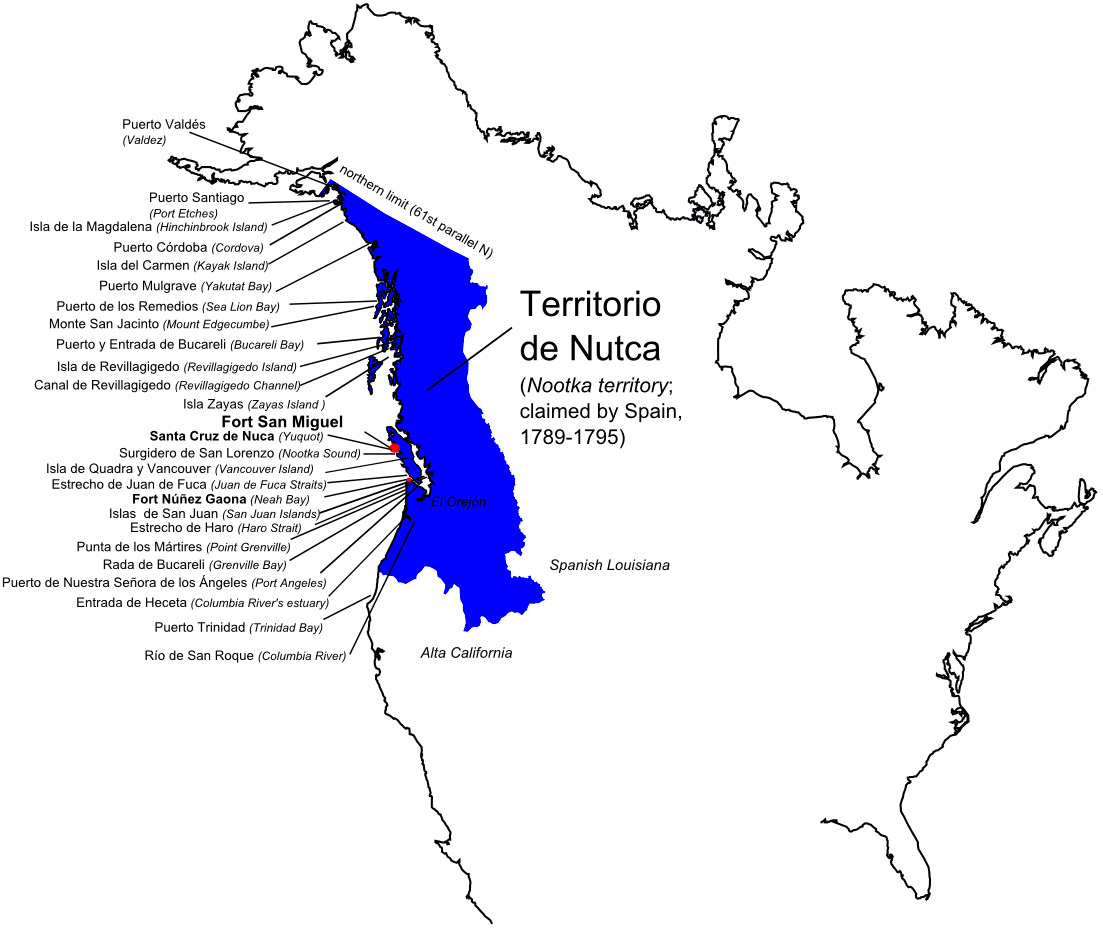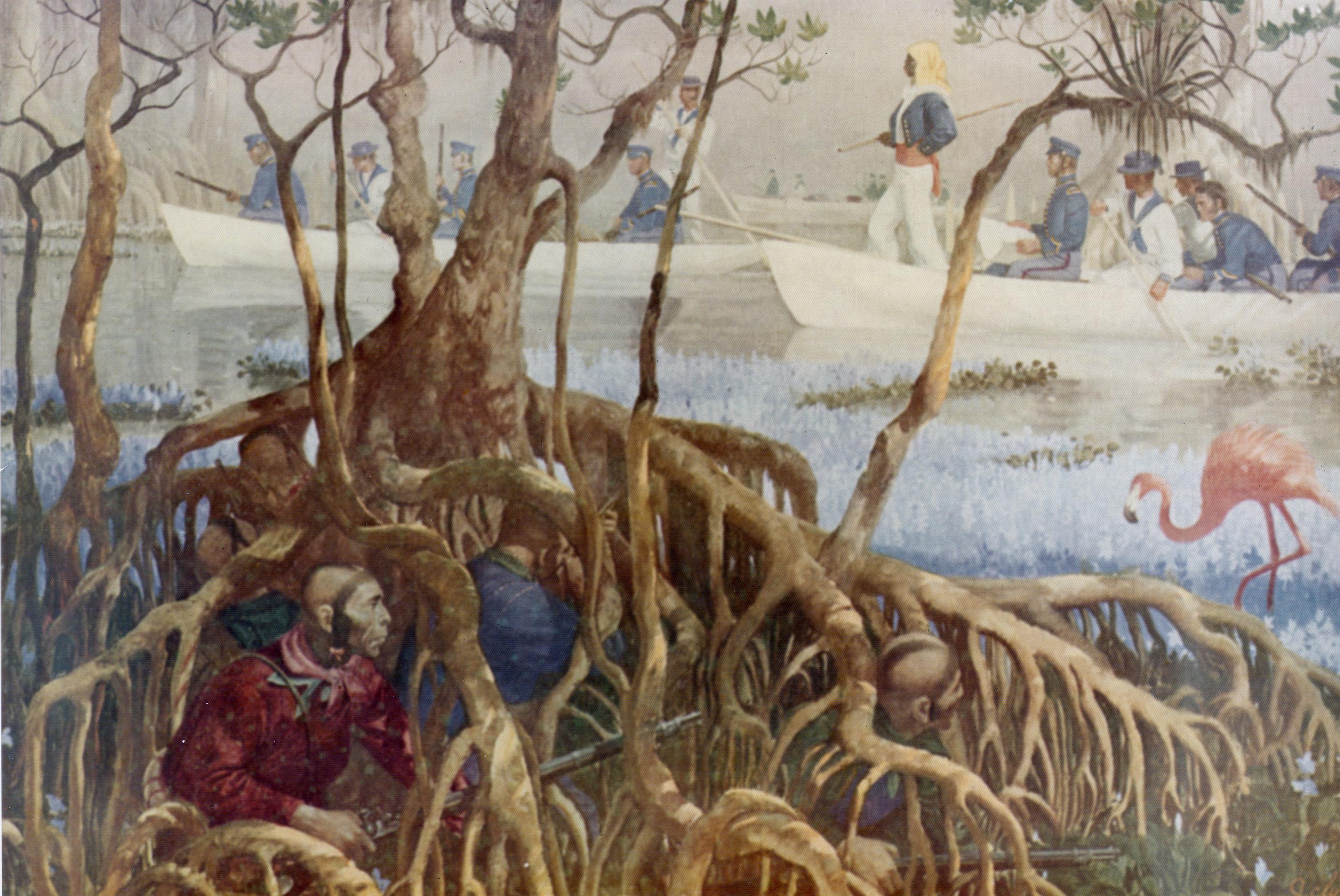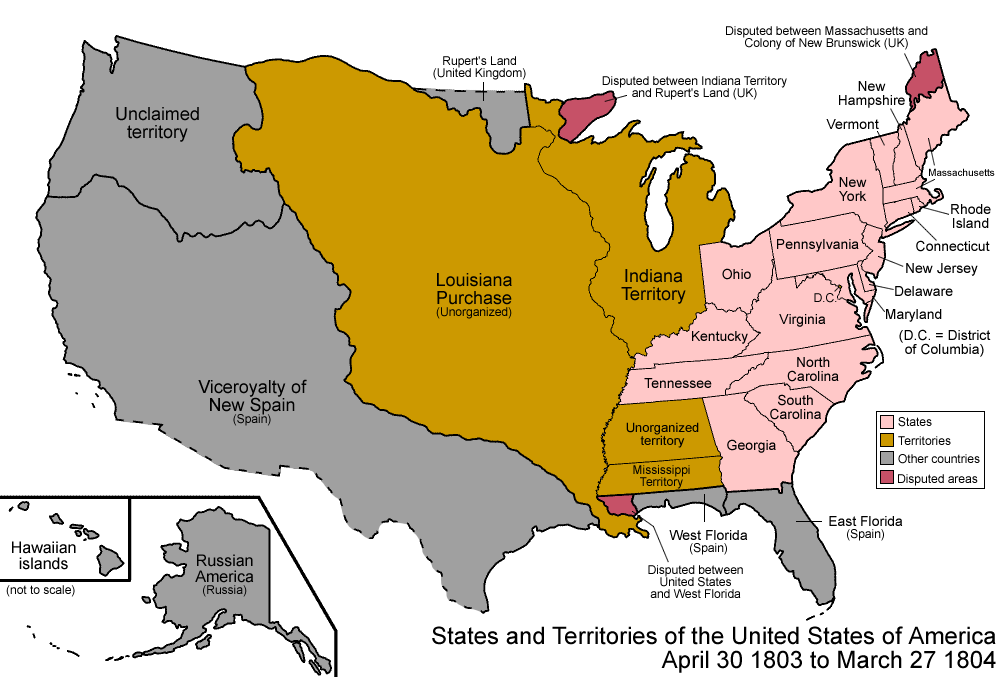|
Presidency Of James Monroe
James Monroe's tenure as the fifth president of the United States began on March 4, 1817, and ended on March 4, 1825. Monroe, a member of the Democratic-Republican Party, took office after winning the 1816 presidential election by in a landslide against Federalist Rufus King. This election was the last in which the Federalists fielded a presidential candidate, and Monroe was unopposed in the 1820 presidential election. Monroe was succeeded by his Secretary of State John Quincy Adams. Monroe sought to eliminate political parties, and the Federalist Party faded as a national institution during his presidency. The Democratic-Republicans also stopped functioning as a unified political party, and the period during which Monroe served as president is often referred to as the "Era of Good Feelings" due to the lack of partisan conflict. Domestically, Monroe faced the Panic of 1819, the first major recession in American history. He supported many federally-funded infrastructure projects, ... [...More Info...] [...Related Items...] OR: [Wikipedia] [Google] [Baidu] |
Daniel D
Daniel commonly refers to: * Daniel (given name), a masculine given name and a surname * List of people named Daniel * List of people with surname Daniel * Daniel (biblical figure) * Book of Daniel, a biblical apocalypse, "an account of the activities and visions of Daniel" Daniel may also refer to: Arts and entertainment Literature * Daniel (Old English poem), ''Daniel'' (Old English poem), an adaptation of the Book of Daniel * ''Daniel'', a 2006 novel by Richard Adams * Daniel (Mankell novel), ''Daniel'' (Mankell novel), 2007 Music * Daniel (Bat for Lashes song), "Daniel" (Bat for Lashes song) (2009) * Daniel (Elton John song), "Daniel" (Elton John song) (1973) * "Daniel", a song from ''Beautiful Creature'' by Juliana Hatfield * Daniel (album), ''Daniel'' (album), a 2024 album by Real Estate Other arts and entertainment * Daniel (1983 film), ''Daniel'' (1983 film), by Sidney Lumet * Daniel (2019 film), ''Daniel'' (2019 film), a Danish film * Daniel (comics), a character in th ... [...More Info...] [...Related Items...] OR: [Wikipedia] [Google] [Baidu] |
Missouri Compromise
The Missouri Compromise (also known as the Compromise of 1820) was federal legislation of the United States that balanced the desires of northern states to prevent the expansion of slavery in the country with those of southern states to expand it. It admitted Missouri as a Slave states and free states, slave state and Maine#Statehood, Maine as a free state and declared a policy of prohibiting slavery in the remaining Louisiana Purchase lands north of the parallel 36°30′ north, 36°30′ parallel. The 16th United States Congress passed the legislation on March 3, 1820, and President James Monroe signed it on March 6, 1820. Earlier, in February 1819, Representative James Tallmadge Jr., a Democratic-Republican Party, Democratic-Republican (Jeffersonian Republican) from New York (state), New York, had submitted two amendments to Missouri's request for statehood that included restrictions on slavery. Southerners objected to any bill that imposed federal restrictions on slavery and ... [...More Info...] [...Related Items...] OR: [Wikipedia] [Google] [Baidu] |
Rush–Bagot Treaty
The Rush–Bagot Treaty or Rush–Bagot Disarmament was a treaty between the United States and Great Britain limiting naval armaments on the Great Lakes and Lake Champlain, following the War of 1812. It was ratified by the United States Senate on April 16, 1818, and was confirmed by Canada, following Confederation in 1867. The treaty provided for a large demilitarization of lakes along the international boundary, where many British naval arrangements and forts remained. The treaty stipulated that the United States and British North America could each maintain one military vessel (no more than 100 tons burden) as well as one cannon (no more than eighteen pounds) on Lake Ontario and Lake Champlain. The remaining Great Lakes permitted the United States and British North America to keep two military vessels "of like burden" on the waters armed with "like force". The treaty, and the separate Treaty of 1818, laid the basis for a demilitarized boundary between the U.S. and British No ... [...More Info...] [...Related Items...] OR: [Wikipedia] [Google] [Baidu] |
War Of 1812
The War of 1812 was fought by the United States and its allies against the United Kingdom of Great Britain and Ireland, United Kingdom and its allies in North America. It began when the United States United States declaration of war on the United Kingdom, declared war on Britain on 18 June 1812. Although peace terms were agreed upon in the December 1814 Treaty of Ghent, the war did not officially end until the peace treaty was ratified by the 13th United States Congress, United States Congress on 17 February 1815. AngloAmerican tensions stemmed from long-standing differences over territorial expansion in North America and British support for Tecumseh's confederacy, which resisted U.S. colonial settlement in the Old Northwest. In 1807, these tensions escalated after the Royal Navy began enforcing Orders in Council (1807), tighter restrictions on American trade with First French Empire, France and Impressment, impressed sailors who were originally British subjects, even those who ... [...More Info...] [...Related Items...] OR: [Wikipedia] [Google] [Baidu] |
United Kingdom Of Great Britain And Ireland
The United Kingdom of Great Britain and Ireland was the union of the Kingdom of Great Britain and the Kingdom of Ireland into one sovereign state, established by the Acts of Union 1800, Acts of Union in 1801. It continued in this form until 1927, when it evolved into the United Kingdom, United Kingdom of Great Britain and Northern Ireland, after the Irish Free State gained a degree of independence in 1922. It was commonly known as Great Britain, Britain or England. Economic history of the United Kingdom, Rapid industrialisation that began in the decades prior to the state's formation continued up until the mid-19th century. The Great Famine (Ireland), Great Irish Famine, exacerbated by government inaction in the mid-19th century, led to Societal collapse, demographic collapse in much of Ireland and increased calls for Land Acts (Ireland), Irish land reform. The 19th century was an era of Industrial Revolution, and growth of trade and finance, in which Britain largely dominate ... [...More Info...] [...Related Items...] OR: [Wikipedia] [Google] [Baidu] |
Oregon Country
Oregon Country was a large region of the Pacific Northwest of North America that was subject to a long Oregon boundary dispute, dispute between the United Kingdom and the United States in the early 19th century. The area, which had been demarcated by the Treaty of 1818, consisted of the land north of 42nd parallel north, 42° N latitude, south of 54°40′ N latitude, and west of the Rocky Mountains down to the Pacific Ocean and east to the Continental Divide of the Americas, Continental Divide. Article III of the 1818 treaty gave joint control to both nations for ten years, allowed land to be claimed, and guaranteed free navigation to all mercantile trade. However, both countries disputed the terms of the international treaty. Oregon Country was the American name, while the British used Columbia District for the British Empire, region. British North America, British and French Canadians, French History of Canada (1763–1867), Canadian North American fur trade, fur tr ... [...More Info...] [...Related Items...] OR: [Wikipedia] [Google] [Baidu] |
West Florida
West Florida () was a region on the northern coast of the Gulf of Mexico that underwent several boundary and sovereignty changes during its history. Great Britain established West and East Florida in 1763 out of land acquired from France and Spain after the Seven Years' War. As its name suggests, it was formed out of the western part of former Spanish Florida (East Florida formed the eastern part, with the Apalachicola River as the border), along with land taken from French Louisiana. Pensacola became West Florida's capital. The colony included about two thirds of what is now the Florida panhandle, as well as parts of the modern U.S. states of Louisiana, Mississippi, and Alabama. As the newly acquired territory was too large to govern from one administrative center, the British divided it into two new colonies separated by the Apalachicola River. British West Florida included the part of former Spanish Florida, which lay west of the Apalachicola, as well as parts of former Fre ... [...More Info...] [...Related Items...] OR: [Wikipedia] [Google] [Baidu] |
First Seminole War
The Seminole Wars (also known as the Florida Wars) were a series of three military conflicts between the United States and the Seminoles that took place in Florida between about 1816 and 1858. The Seminoles are a Native American nation which coalesced in northern Florida during the early 1700s, when the territory was still a Spanish colonial possession. Tensions grew between the Seminoles and American settlers in the newly independent United States in the early 1800s, mainly because enslaved people regularly fled from Georgia into Spanish Florida, prompting slaveowners to conduct slave raids across the border. A series of cross-border skirmishes escalated into the First Seminole War, when American general Andrew Jackson led an incursion into the territory over Spanish objections. Jackson's forces destroyed several Seminole, Mikasuki and Black Seminole towns, as well as captured Fort San Marcos and briefly occupied Pensacola before withdrawing in 1818. The U.S. and Spain soon ... [...More Info...] [...Related Items...] OR: [Wikipedia] [Google] [Baidu] |
Adams–Onís Treaty
The Adams–Onís Treaty () of 1819, also known as the Transcontinental Treaty, the Spanish Cession, the Florida Purchase Treaty, or the Florida Treaty,Weeks, p. 168. was a treaty between the United States and Spain in 1819 that ceded Florida to the U.S. and defined the boundary between the U.S. and Mexico (New Spain). It settled a standing border dispute between the two countries and was considered a triumph of American diplomacy. It came during the successful Spanish American wars of independence against Spain. Florida had become a burden to Spain, which could not afford to send settlers or staff garrisons, so Madrid decided to cede the territory to the United States in exchange for settling the boundary dispute along the Sabine River in Spanish Texas. The treaty established the boundary of U.S. territory and claims through the Rocky Mountains and west to the Pacific Ocean, in exchange for Washington paying residents' claims against the Spanish government up to a total of $5 ... [...More Info...] [...Related Items...] OR: [Wikipedia] [Google] [Baidu] |
Spain
Spain, or the Kingdom of Spain, is a country in Southern Europe, Southern and Western Europe with territories in North Africa. Featuring the Punta de Tarifa, southernmost point of continental Europe, it is the largest country in Southern Europe and the fourth-most populous European Union member state. Spanning across the majority of the Iberian Peninsula, its territory also includes the Canary Islands, in the Eastern Atlantic Ocean, the Balearic Islands, in the Western Mediterranean Sea, and the Autonomous communities of Spain#Autonomous cities, autonomous cities of Ceuta and Melilla, in mainland Africa. Peninsular Spain is bordered to the north by France, Andorra, and the Bay of Biscay; to the east and south by the Mediterranean Sea and Gibraltar; and to the west by Portugal and the Atlantic Ocean. Spain's capital and List of largest cities in Spain, largest city is Madrid, and other major List of metropolitan areas in Spain, urban areas include Barcelona, Valencia, Seville, ... [...More Info...] [...Related Items...] OR: [Wikipedia] [Google] [Baidu] |
East Florida
East Florida () was a colony of Kingdom of Great Britain, Great Britain from 1763 to 1783 and a province of the Spanish Empire from 1783 to 1821. The British gained control over Spanish Florida in 1763 as part of the Treaty of Paris (1763), Treaty of Paris that ended the Seven Years' War. Deciding that the colony was too large to administer as a single unit, British officials divided Florida into two colonies separated by the Apalachicola River: the colony of East Florida, with its capital located in St. Augustine, Florida, St. Augustine; and West Florida, with its capital located in Pensacola. East Florida was much larger and comprised the bulk of the former Spanish colony and most of the current Florida, state of Florida. It had also been the most populated region of Spanish Florida, but before control was transferred to Britain, most residents – including virtually everyone in St. Augustine – left the territory, with most migrating to Cuba. Britain tried to attract settle ... [...More Info...] [...Related Items...] OR: [Wikipedia] [Google] [Baidu] |
Parallel 36°30′ North
The parallel 36°30′ north is a circle of latitude that is 36 degrees north of the equator of the Earth. This parallel of latitude is particularly significant in the history of the United States as the line of the Missouri Compromise, which was used to divide the prospective slave and free states east of the Mississippi River, with the exception of Missouri, which is mostly north of this parallel. The line continues to hold cultural, economic, and political significance to this day; the Kinder Institute for Urban Research defines the Sun Belt as being south of 36°30′N latitude. In colonial America The parallel was the Royal Colonial Boundary of 1665. In the United States In the United States, the parallel 36°30′ forms part of the boundary between Tennessee and Kentucky, in the region west of the Tennessee River and east of the Mississippi River. This parallel also forms part of the boundary between Missouri and Arkansas in the region west of the St. Francis Riv ... [...More Info...] [...Related Items...] OR: [Wikipedia] [Google] [Baidu] |







